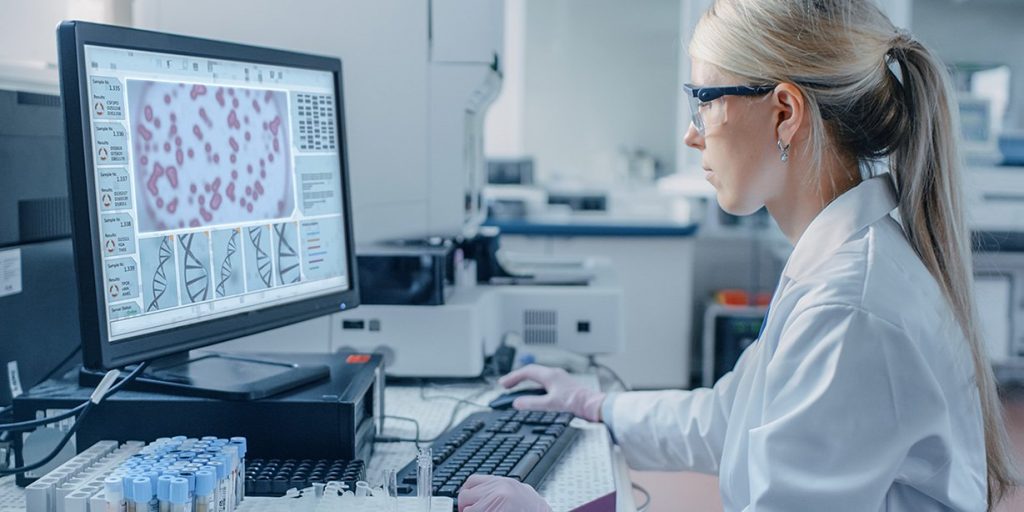
Introduction
With advanced genomic analysis applications becoming routine in many labs, the need for high purity, high quality DNA and RNA samples collected using non-invasive sampling methods, such as saliva, is becoming increasingly important.
Nucleic acid extraction from saliva can be challenging due to the presence of contaminants and inhibitors that can interfere with downstream applications. However, in recent years significant improvements have been made with devices to collect, store, and process saliva to extract DNA and RNA. Good yields of high-quality nucleic acids can now be extracted for use in sensitive downstream applications.
Variations in sample collection and handling can dramatically affect data quality. This article explains how to get the best from your saliva samples by maximizing the purity and yields of DNA and RNA with information on:
- Preventing sample contamination
- Saliva collection from donors
- Nucleic acid stabilization
- Safely shipping saliva samples
- Choosing your DNA/RNA isolation kit
- Isolating high molecular weight (HMW) DNA from saliva
- Cleaning up your DNA after an initial extraction
Preventing sample contamination
The main sources of human DNA in saliva are epithelial cells and leukocytes. Saliva samples may also include bacterial DNA, allowing for DNA extraction and analysis of the oral microbiome. To prevent contamination from external nucleic acids and other factors that may interfere with the purity of samples, it is important to ensure that donors do not eat, drink, smoke, or chew gum for at least 30 minutes before providing a sample.
Saliva collection from donors
For collection by donors at home without medical supervision, kits such as the GeneFix™ Saliva DNA/RNA range include a simple to attach funnel that makes it easy to collect saliva in a tube prefilled with stabilization reagent for transport and storage of the sample.

Traditionally, collection devices were designed to collect 1ml or 2ml saliva, but newer devices such as the GFX-03, can collect up to 3ml if higher yields (300μg+) are required, e.g., for biobanking. For maximum yields, donors must ensure that they don’t include bubbles when measuring the liquid level in the tube as this can result in overfilling, or not collecting enough saliva.
Some donors, e.g., children or elderly patients, may find it difficult to produce saliva. If this is the case, saliva production can be stimulated by gently rubbing the cheeks or using a kit such as the SaliFix™ Saliva Swab DNA Collection kit which contains absorbent swabs for easy collection of smaller volumes of saliva.

Nucleic acid stabilization
One of the key benefits of using saliva as a source of nucleic acids is that samples can be collected remotely and mailed for analysis. Stabilization reagents protect sample integrity by stabilizing DNA and RNA and preventing microbial growth. GeneFix saliva collection kit tubes are prefilled with a non-hazardous guanidium-free stabilization reagent that stabilizes DNA at room temperature for 5 years and RNA for 2 months. Samples can be shipped and stored at room temperature, removing the costs and logistical challenges associated with cold chain storage and transport. For longer term storage GeneFix kits are also suitable for freezing at temperatures down to -80°C.
Safely shipping saliva samples

Shipping packaging and collection tubes must be manufactured from robust materials that can withstand the rigors of the mailing process to ensure your saliva samples arrive at the lab intact. Isohelix sample collection tubes are pressure tested to 95kPa, and Isohelix™ TPS-50 transport packs are pressure-tested and adhere to UN3373 packaging standards – including secure sealing strips and absorbent material that retains samples leaking from the primary tube within further layers of packaging, preventing sample cross-contamination.
Choosing your DNA/RNA Isolation Kit
Precipitation methods of DNA isolation such as the GeneFix™ Saliva-Prep Kit, enable the rapid and efficient extraction of high yields of high molecular weight DNA and can be easily scaled to accommodate different sample volumes. As these kits don’t require additional solvents, columns, or filtration, workflows are easy to automate, with fast handling times and reduced sample steps. The unique precipitation chemistry maximizes recovery of high molecular weight DNA, while minimizing co-precipitation of RNA and degraded low-weight DNA.
Alternatively, silica membrane-based spin columns, such as those included in the Xtreme (XME) and Xtreme-RNA (XMR) kits, allow the purification of very high-purity, high molecular weight DNA or RNA for demanding downstream applications such as next generation sequencing or microarrays.
Isolating high molecular weight (HMW) DNA from saliva
Gentle handling is key to preserving the integrity of your DNA samples and isolating HMW DNA for more demanding applications such as whole genome sequencing (WGS) or microarrays. To prevent shearing, use wide bore tips and pipette slowly, avoiding vortexing or shaking tubes.

Cleaning up your DNA after initial extraction
If, despite your best efforts, your extracted DNA is not of a sufficient concentration or purity for your downstream applications, a DNA clean up kit can be used. The Isohelix DNA clean up kit uses a simple 30 minute protocol to reclaim a “failed” sample, preserving your DNA yields and giving High Purity DNA with 260/280 ratios to 1.8.
Nanodrop Scan Before & After DCU CleanUp

Summary
By following the advice given in this article, high yields of high purity DNA can be extracted from saliva for use in a number of sensitive downstream applications.
GeneFix offers superior performance and high yields when compared with alternative collectors :


